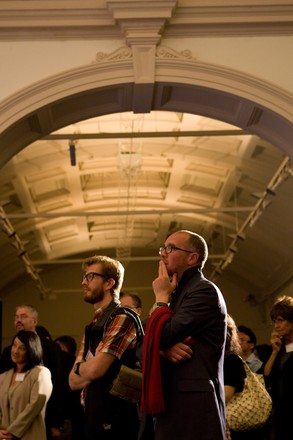
The galleries
opened 1910 (Mitchell Gallery) and 1929 (Dixson Gallery)
The three rooms of the Mitchell Gallery and the smaller Dixson Gallery behind occupy the first floor of the Mitchell and Dixson Wings. They can be accessed from the vestibule by the marble staircase, or by the glass walkway from the Macquarie Wing.
The Mitchell Gallery opened as part of the Mitchell Library in 1910, and was originally designed to display pictures and artifacts from the Mitchell collection. The area was extended in 1929 to display the collection of significant historic pictures first offered to the Library by Sir William Dixson in 1919. Designed in the classical style, the rooms feature arched entries and vaulted coffered ceilings similar those in the Mitchell Reading Room and vestibule. The architectural references to ancient Greece are also seen in the ionic columns and plinths. In recent years, a replica of the original tallowood parquetry floor has been installed. Today, the galleries are used for a changing program of exhibitions and displays.


 Back to list
Back to list